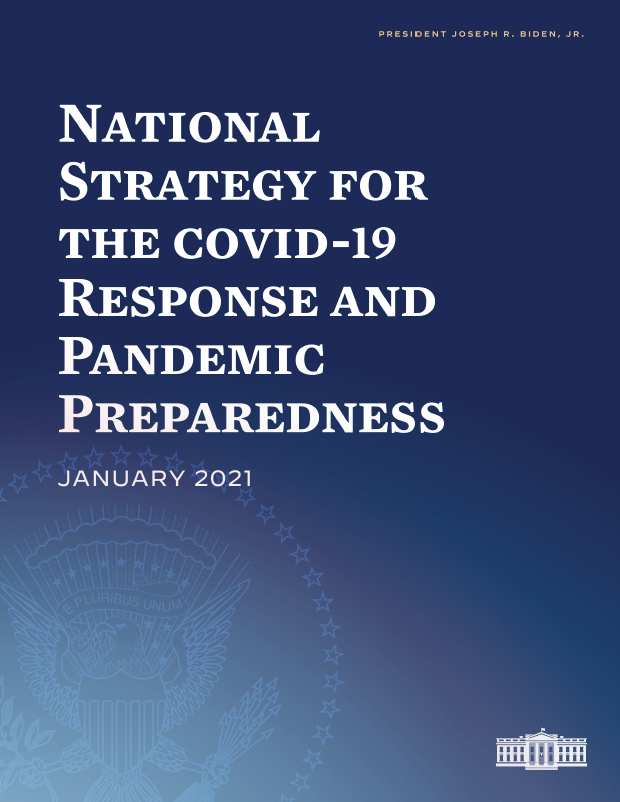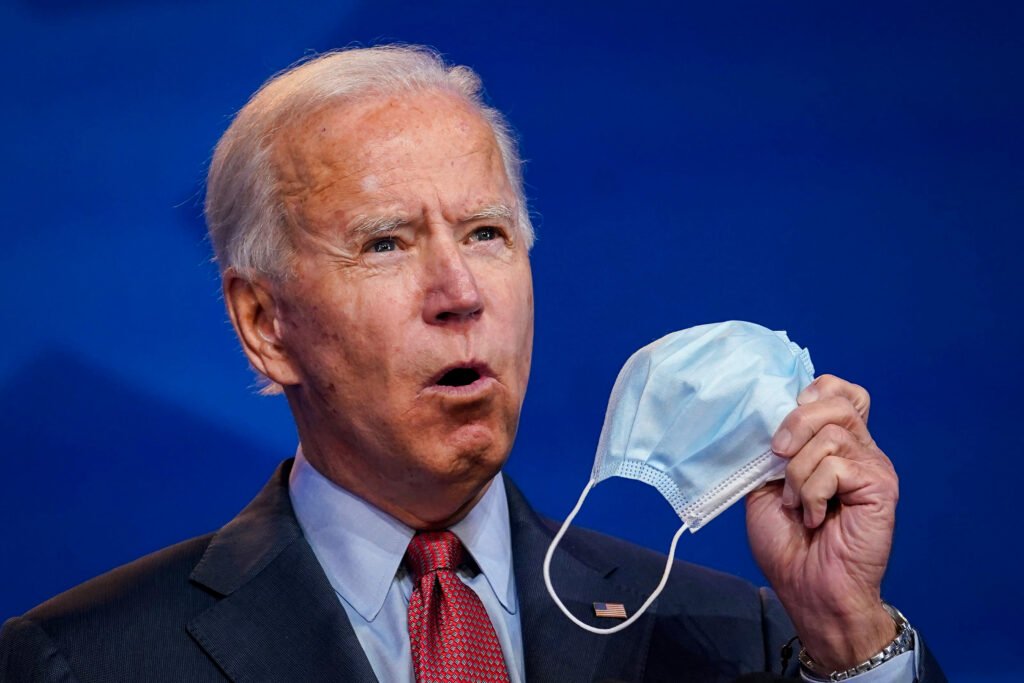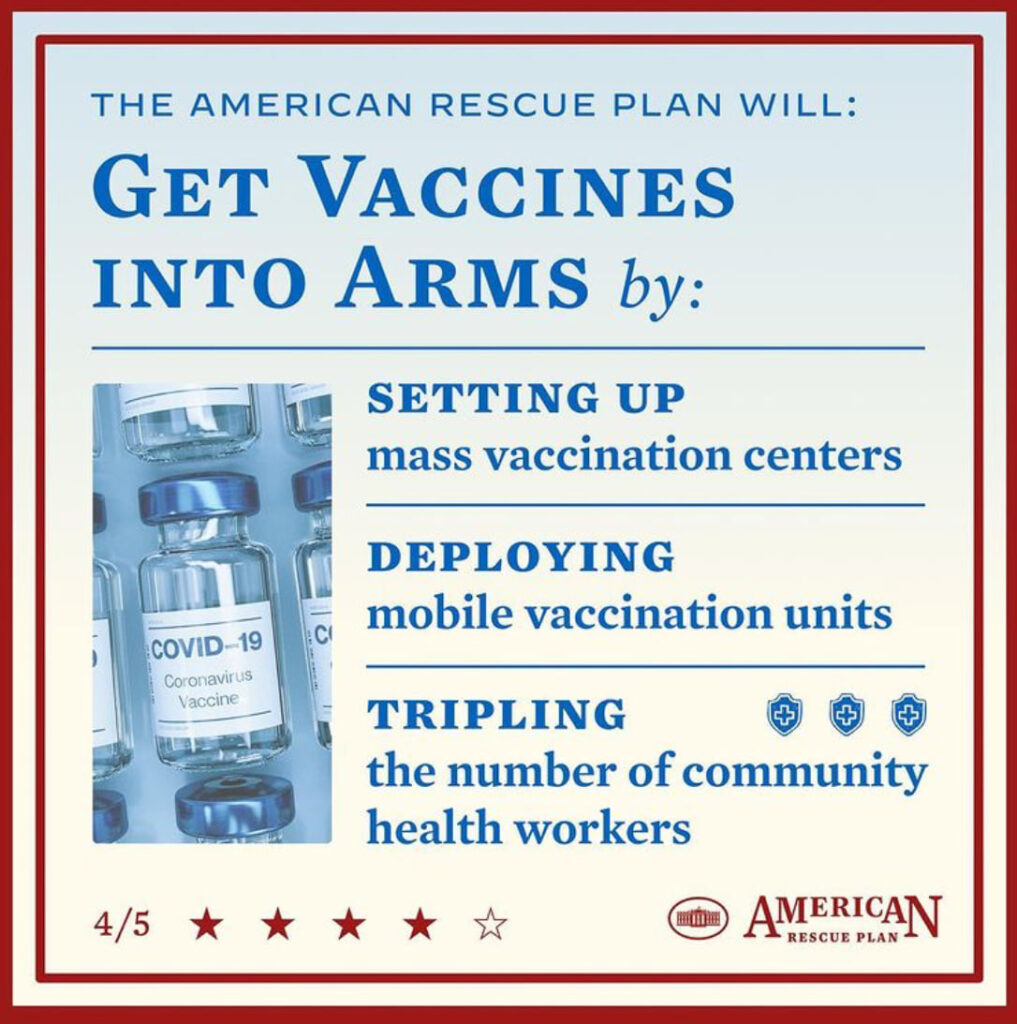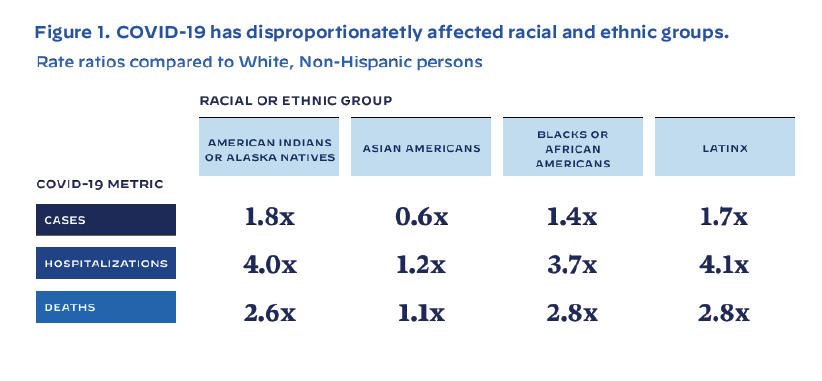
Search the Biden administration’s new National Strategy for the COVID-19 Response and Pandemic Preparedness for the term “Vitamin D” and you will come up with nothing.
Vitamin C? Nothing. Zinc? Nope, nothing.
The word “nutrition” does appear thrice, but only in the context of malnutrition, and the need to bolster the government’s food aid programs.
OK, what about “resilience”?
That word appears 18 times, but only in reference to a “Pandemic Supply Chain Resilience Strategy” and policies for national resilience “against biological catastrophes.”
In short, this document says nothing about nutrition-based approaches for bolstering immune system resilience and improving health status, so as to mitigate COVID risk. Two hundred pages, not one word.
From the outset of the pandemic, data from around the world pointed to a clear pattern: people with chronic diseases were at greater risk for coronavirus infection, and for having more acute or life-threatening cases.
This is not to say that healthy people are risk-free. But the correlations between poor baseline health, compromised immune function, and bad COVID outcomes are very clear.
The National Strategy document does acknowledge that “Adults of any age with certain underlying medical conditions are at increased risk for severe COVID-19,” but it makes no mention of any of the myriad nutrition and lifestyle-based interventions that might lessen that risk.
Big Bet on Vaccines
The word “vaccine” appears 207 times in the National Strategy report. That’s more than once per page, on average. And the administration has set the ambitious goal of “100 million shots in the first 100 days.”

“The national vaccination effort will be one of the greatest operational challenges America has ever faced. To ensure all Americans can be vaccinated quickly, the President has developed a plan for expanding vaccine manufacturing and purchasing COVID-19 vaccine doses for the US population by fully leveraging contract authorities, including the Defense Production Act; deploying onsite support to monitor contract manufacturing operations; and purchasing additional FDA-authorized vaccines to deliver as quickly as possible,” the document states.
No doubt, wider vaccine distribution, along with masking and minimizing social contact will be important for controlling COVID. The administration’s emphasis on them is neither surprising nor unreasonable.
But there are many other modalities that could also potentially play a role. Vitamin D is a prime contender, though it may not have a role in the acute care setting.
Data from a just-published Brazilian study of 240 hospitalized COVID patients showed that a single oral mega-dose of vitamin D3 (200,000 IU), did not significantly reduce lengths-of-stay, need for ventilators, or ICU admissions (Murai I H, et al, JAMA, 2021). The large-scale 2700-patient VIVID (Vitamin D and COVID-19) trial, headed by JoAnn Manson at Brigham & Women’s Hospital is now underway.
Though it’s role as a COVID treatment is in question, vitamin D could have a role in COVID prevention. There is a wealth of epidemiologic data indicating that vitamin D deficiency raises COVID risk. Further, there is evidence that vitamin D can reduce the incidence of other types of pulmonary infections in vulnerable populations, and several plausible mechanisms to explain these effects.
Even Anthony Fauci—a skeptic about herbs and supplements over his long tenure as director of the National Institutes of Allergy and Infectious Disease—stated last September that he takes vitamin D as part of his personal COVID prevention routine.
“If you are deficient in vitamin D, that does have an impact on your susceptibility to infection. So, I would not mind recommending, and I do it myself, taking vitamin D supplements,” he told actress Jennifer Garner on an Instagram Live interview. Dr. Fauci is now a chief medical advisor to President Biden.
It is reasonable to think that this inexpensive, widely available vitamin would be worthy of at least a passing mention in the nation’s pandemic control agenda.
We might vaccinate our way toward at least partial containment of SARS-CoV-2. But we’ll never vaccinate our way out of the morass of chronic diseases—most driven by diet and lifestyle—that renders so many people vulnerable to this virus and other pathogens.
There are preliminary or epidemiologic studies, reasonable biochemical mechanisms, and clinical case reports to suggest a potential role for: vitamin A, zinc, B vitamins, nicotinamide adenine dinucleotide (NAD+), n-acetyl cysteine, vitamin E, essential fatty acids, oil of oregano, curcumin, modified citrus pectin (MCP) and a host of other nutrients and botanicals. The Institute for Functional Medicine has compiled this evidence in a practical and clinically applicable way.
But none of this seems to register at the public policy level.
Policy Priorities
To be fair, the National Strategy is not intended to be a set of medical treatment guidelines. Rather it is a statement of policy priorities aimed at quelling the pandemic, supporting the public through the prolonged containment period, preparing for future “biological catastrophes,” and ultimately restoring the economy.
It does not contain any references to remdesivir, baricitinib, dexamethasone, convalescent plasma, amphotericin B, hydroxychloroquine, or any of the other drugs being tested—formally or anecdotally—for treatment of COVID-19.
It would be foolish to expect the White House to issue a ringing endorsement of “food-as-medicine” in the context of this pandemic. The federal government—regardless of which party holds power—has never been broadly supportive of nutrition-based medicine or dietary supplements in any form.
But by putting most of its eggs in the vaccine basket while ignoring the role of negative lifestyle factors, the administration misses an opportunity to address fundamental health issues.

We might vaccinate our way toward at least partial containment of SARS-CoV-2. But we’ll never vaccinate our way out of the morass of chronic diseases—most driven by diet and lifestyle—that renders so many people vulnerable to this virus and other pathogens.
Seven Pillars
The Biden COVID-19 strategy is centered on seven “pillars”:
- Restore trust with the American people.
- Mount a safe, effective, and comprehensive vaccination campaign.
- Mitigate spread through expanding masking, testing, data, treatments, health care workforce, and clear public health standards.
- Immediately expand emergency relief and exercise the Defense Production Act.
- Safely reopen schools, businesses, and travel while protecting workers.
- Protect those most at risk and advance equity, including across racial, ethnic and rural/urban lines.
- Restore US leadership globally and build better preparedness for future threats.
The administration states that, “Our national strategy will be driven by scientists and public health experts who will regularly speak directly to you, free from political interference as they make decisions strictly on science and public health alone.”
To that end, the administration promises to:
- Conduct regular expert-led, science-based public briefings
- Release regular reports on the state of the pandemic.
- Mandate CDC to develop clear, evidence-based, metric-driven public health guidance and effectively and frequently communicate guidance to the American people.
- Publicly share data around key response indicators.
- Enhance federal agencies’ collection, sharing, and analysis of data “to support an equitable COVID-19 response and recovery.”
- Maintain a public dashboard tracking COVID-19 cases at the county level, so that Americans can gauge the level of transmission in their own communities to make their own informed choices.
“America deserves a response to the COVID-19 pandemic that is driven by science, data, and public health — not politics. Through the release of the National Strategy for the COVID-19 Response and Pandemic Preparedness, the United States is initiating a coordinated pandemic response that not only improves the effectiveness of our fight against COVID-19, but also helps restore trust, accountability and a sense of common purpose,” the document states.
Assuming this is a sincere intention, the excision of partisan politics from public health —to the extent that is even possible–would be a welcome development. Likewise, a movement toward truly science-guided policy.
The problem is that “science” in the context of this pandemic has become very narrowly defined.
Limiting Possibilities
As a process, science begins with systematized observations leading to testable hypotheses. Exclusion of whole sets of observations reduces the scope of hypotheses to be studied, thus limiting the number of practical solutions that emerge.
That is precisely what is happening with COVID. There are many potentially helpful modalities that might have impact in directly combatting the virus, bolstering human immune responses to it, or improving overall resilience and thus reducing susceptibility. Only a few of these options receive funding and political support.
For the sake of expedience, this makes sense. This is a crisis, and the world’s governments must act. Leaders place their bets on modalities they believe will deliver the biggest impact in the shortest time, and push other potential options to the sidelines.
Historically, mass vaccination campaigns have turned the tides on serious infectious diseases. Biden, like other world leaders, hopes for similar success against COVID-19.
With its New Deal-style graphics, and bold “Can do” statements in red, white, and blue, the Biden administration’s COVID vaccine promotion program, dubbed “American Rescue Plan,” evokes the spirit of the 1930s and 40s—the era when federal polio vaccine efforts more or less ended an awful scourge, and the nation rolled up its sleeves and worked together for common good.
Given the massive government and private sector investments in COVID vaccine development, it is not surprising that vaccines are the cornerstone of the new administration’s National Strategy.
Operation Warp Speed, the federal COVID vaccine program initiated by the Trump administration, had an $18 billion budget as of last October. Former FDA commissioner, David Kessler, now heads the project.
Germ Theory Writ Large
Since the earliest days of epidemiology in the 16th century, people recognized that in any given epidemic some people get sick and others do not.
This simple truth led to the long-running intellectual battle between those who believe the primary power to make someone ill lies with pathogens—bacteria, viruses, or fungi—and those who contend that individual susceptibility is the key determinant.
This dialectic is famously capsulized in the 19th century rivalry between Louis Pasteur, who argued that germs were king, and Pierre Béchamp, who held that it was the “terrain”—the individual’s overall health status—that determines whether a germ actually trigger illness.
Most public health experts acknowledge that an infectious disease is the result of three factors: the nature of the pathogen, individual susceptibilities, and environmental conditions.
But from a practical—and commercial—standpoint, Pasteur’s germ theory won the day, and continues to dominate medical thinking. The history of modern medicine is largely the history of germ theory.
The basic motive of detecting pathogens and trying to destroy them permeates all aspects of healthcare. Even in conditions like heart disease, where there is no obvious bacterial or viral culprit, the focus is on biochemical “pathogens”—LDL cholesterol, for example—for which “anti” drugs are discovered and marketed.
We expend extraordinary resources trying to destroy or fight off pathogens, and far less on understanding the “terrain” in which a pathogen does or does not cause disease. This tendency is obvious in the COVID context.
Yes, there really is a virus and it really does cause harm. Though does sometimes sicken and kill young healthy people, it is far more likely to kill those with compromised immune systems or chronic metabolic disorders.
Yet the entire public health dialog is about detecting and routing the virus. At this point, we are not even paying lip service to the concept of bolstering the terrain.
Yes, we need safe and effective vaccines to slow the spread of COVID, and good drugs to mitigate the acute symptom cascade. But neither drugs nor vaccines are 100% efficacious. Strain matches for ordinary flu vaccines are consistently below 50% year to year. What makes us think that a 2020 coronavirus vaccine would be fail-safe against 2021’s strains? Or 2022’s?
Then there’s the matter of convincing–or mandating–everyone to take the shots. Vaccine distribution is already meeting strong resistance in some communities. Though early experience suggests that the new vaccines are quite safe, many people remain wary and understandably so: the technology is new, and there are not yet any long-term studies.
Positive Steps
There’s much to applaud in the new administration’s plan:
- It provides guidance for coherent, coordinated inter-agency responses to the pandemic;
- It creates a consistent message on key containment measures like masking in public places—including all federal properties;
- It promises to increase accessibility of COVID tests, including provision of free tests for uninsured Americans.
- It explicitly acknowledges racial, ethnic, and socioeconomic health disparities, and proposes potential solutions to remedy them.
- It funds basic research on potentially effective new antiviral drugs.
- It addresses the complex issues of supply chain continuity, and promotes domestic production of PPE and other vital medical equipment.
- It allocates over $500 billion in flexible state and local relief funds for public school systems, and stabilization funds for colleges and universities.
- It mandates paid leave for workers that must go into quarantine and isolation if they test positive for or become symptomatic with COVID-19.
- It strengthens social safety net programs for food assistance, housing, and child care.

But the absence of any directives for improving health and resilience is a glaring oversight, one that was all too predictable.
A Missing Voice
The truth is holistic, functional, and naturopathic medicine are not even at the table when lawmakers come together to discuss healthcare policy. The organizations representing these professions are still small, and lack the funding or the political connections to ensure that these perspectives are given due consideration. The voices of the holistic clinical community are generally not being heard inside the halls of power.
Though the dietary supplements industry is quite large at this point—total US revenue was estimated at over $32 billion in 2019— and the natural foods industry is vastly bigger, neither sector has not put a lot of energy or resources toward developing relationships with legislators or public health policymakers over the last 20 years.
Despite surging public interest, nutrition and natural medicine remain marginalized and largely excluded from policy discussions.
With a new administration at the helm, a major health crisis raging, and few effective conventional treatment options, the field of holistic and functional medicine now has a unique opportunity to demonstrate the merits of its principles and practices.
Whether we have the will and the resources to do so is an open question.
END







